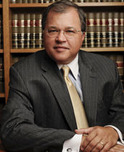Posts Tagged ‘lawyer’
Hubway Bike Share Program Returns to Boston
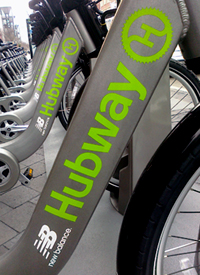 The New Balance Hubway bike sharing program re-launches in Boston tomorrow. Sixty percent of the stations will open, with the remainder scheduled to offer bike rentals by April 1.
The New Balance Hubway bike sharing program re-launches in Boston tomorrow. Sixty percent of the stations will open, with the remainder scheduled to offer bike rentals by April 1.
Hubway opened last July and had a busy first season with 3,650 cyclists signed up as annual members. The system, which is partially funded by the Federal Transit Administration, is operated by Alta Bike Share in partnership with Boston Bikes, an initiative of the City of Boston.
Cyclists can join as annual members for $85 per year or use the system as casual members and pay $12 for 3 days or $5 for 24 hours. The first 30 minutes of each ride is included in the cost, with riders paying for additional time based on their membership plan.
The schedule for opening bike rental stations could be delayed depending on weather conditions. Hubway recommends cyclists visit the Station Map page of its website to monitor progress, follow the program on Facebook or Twitter or download its free Spotcycle application to their smart phone.
The Boston bike accident lawyers at Breakstone, White & Gluck offer these safety tips for cyclists and drivers to avoid cycling accidents:
For Cyclists:
Wear a helmet. Protect yourself from sustaining injuries in bicycle accidents. Your purchase agreement with the Hubway program also requires it. Riders can purchase helmets when they register for the program. Helmets may also be available at some stations and the program has arranged for a number of local retailers to offer helmets at a discounted price of $7.99.
Cyclists should generally ride to the right of traffic, on the right side of the road. Bicyclists may also operate in bike lanes where available and in the center of the lane. Up to two bicyclists may travel abreast in the same lane. Cyclists are not permitted to ride on sidewalks in business districts and many areas of Boston.
Cyclists should never ride against traffic. They have to stop at red lights and stop signs just like motor vehicle traffic.
For Drivers:
Watch your speed! Drivers should travel at the speed limit or slower when conditions involving other vehicles, cyclists or pedestrians warrant it. Unless posted otherwise, state law requires drivers to travel at 30 mph in thickly settled or business districts and 40 mph outside of these areas.
Drivers should take caution turning to avoid bike accidents. Drivers who are turning left must yield the right of way to cyclists.
Drivers should look before they exit a parked car so as not to injure or impede the travel of a passing cyclist. This is illegal, can cause bicycle accidents and carries a fine of up to $100.
Drivers must have adequate room to pass a cyclist. They must also have enough space before returning back to the lane.
Related:
- Facts About Cycling in Massachusetts
- What to Know if You’ve Been Injured in a Bicycle Accident
- New Balance Hubway Program
- Bicyclists Can Protect Themselves By Buying Extra Car Insurance
- MassBike
Elevator Accident in New York City Leads to Firings, Suspensions
 A new report on a New York City elevator accident highlights the importance of safety on elevators, escalators and other equipment that transports the public.
A new report on a New York City elevator accident highlights the importance of safety on elevators, escalators and other equipment that transports the public.
While many elevators and escalators are used daily by large numbers of people, they pose a risk for injury when they are not properly maintained. The responsibility falls on manufacturers to produce safe products and building owners, management companies and city and state inspection officials to ensure machinery is kept up to code.
Elevator and escalator injuries and deaths are more common than the public may know. Each year, elevator accidents result in about 10,200 injuries and 27 deaths in the U.S. Escalator accidents result in about 17,000 injuries and 30 deaths.
One tragic case recently occurred in Massachusetts. In March 2011, a 4-year-old boy was killed after an escalator accident in the Sears at the Auburn Mall, near Worcester. The child was standing on the store’s second floor when he grabbed the moving down rail of the escalator and was pulled through a gap between the Plexiglas divider and the escalator. He fell 18 feet onto a display case.
Investigators later learned that the gap between the Plexiglas and the elevator was 1-1/4 inch greater than code. After an investigation, two state escalator inspectors were fired, six were suspended and 26 others were reprimanded.
In December 2011, two women lost their lives in separate elevator accidents. On December 9 in California, a 48-year-old woman was killed on an elevator accident at Cal State Long Beach. She was killed when the elevator got stuck between the second and third floors and someone tried to help her escape. A 2000-pound car crashed down on her.
Just five days later in New York City, a 41-year-old advertising executive was killed in an elevator accident in a Midtown Manhattan office tower. The woman was killed after she stepped into an elevator which suddenly lurched upward with the doors still open. She was pinned to an elevator shaft between the first and second floor and pronounced dead at the scene. Two other people who were trapped in the elevator were rescued and treated for trauma.
The city released results of the investigation into the woman’s death this week, finding that a maintenance crew had been repairing the elevator and utilized a special jump wire to bypass the elevator’s safety system nine minutes before the woman’s death. They then accidentally left it in place.
The investigation also found two other violations. First, the elevator repair crew never posted a warning that work was being performed. Second, the crew never called the city’s Buildings Department before putting the elevator back in service.
The city has suspended the license of the company from performing maintenance, Transel, which services 2,500 elevators in New York City. The company has fired five mechanics.
Related:
- Transel Elevator Fires 5 After Report on Elevator Death, The Associated Press.
- Escalator fall leads to firings, suspensions, Worcester Telegram.
Car Accident Deaths Rise Among Teens
 After several years of decreases in U.S. teen driving deaths, new data shows the number climbed slightly in the first half of 2011.
After several years of decreases in U.S. teen driving deaths, new data shows the number climbed slightly in the first half of 2011.
Car accidents have long been the leading cause of death among U.S. teens, accounting for more than one in three fatalities, according to the Centers for Disease Control and Prevention (CDC). But new preliminary data collected by the Governors Highway Safety Association (GHSA) shows an increase in teen driving deaths as the number of overall highway deaths is declining – as is the number of overall teen deaths. The data was submitted to the National Highway Traffic Safety Administration (NHTSA).
The data shows the number of 16-year-olds killed increased from 80 in the first half of 2010 to 93 in the first six months of 2011. The number of 17-year-olds killed rose from 110 to 118 during the same period.
The nation has not seen an increase in eight years. During that time, many states have passed graduated driving laws for teenagers with a goal of reducing car accident deaths. The Massachusetts Junior Operator Law states drivers under 18 cannot drive with another passenger under 18. The only exception is for for siblings. Teen drivers are also not allowed to drive between 12:30 a.m. and 5 a.m. In September 2010, the Safe Driver Law took effect, prohibiting drivers under 18 from using cell phones while driving.
In a Washington Post article published Feb. 17, Barbara Harsha, executive director of GHSA, called on Congress to provide financial incentives to states which have strengthened teen driving laws and for the NHTSA to work on efforts to reduce distracted driving among teens and increase seat belt use.
A Pew Research Center study showed 43 percent of teens have talked on a cell phone while driving and 48 percent have been in a car with an operator who was texting while driving.
Related:
Product Recall: More than 10,000 Fuji Bicycles Recalled
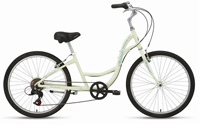 The U.S. Consumer Product Safety Commission announced the recall this week of more than 10,000 defective bicycles after reports the product’s frame was breaking.
The U.S. Consumer Product Safety Commission announced the recall this week of more than 10,000 defective bicycles after reports the product’s frame was breaking.
Fuji Saratoga Women’s Bicycles recalled about 10,500 bicycles sold nationwide from November 2007 through December 2011. The bicycles were recalled after the company became aware of 12 reports of bicycle frames breaking. There were two injuries reported, including a head laceration requiring 20 stitches.
The product’s defect is its frame was breaking in the center of the downtube during use, causing bicyclists to lose control and fall. Bicyclists are instructed to stop riding and seek a replacement bike frame.
About the recalled Fuji women’s cruisers bicycles:
- 2008 to 2010 models of Saratoga 1.0, Saratoga 2.0, Saratoga 3.0 and Saratoga 4.0. The model type will be printed on the bike.
- The bikes come in various colors.
- The bikes will have the words “Fuji” and “Saratoga” alone or “Saratoga” printed on the frame.
- Serial numbers beginning with ICFJ7, ICFJ8, ICFJ9, ICFJ10 and ICFJ11. The serial number is located on the bottom of the frame near the crank.
The defective products were imported by Advanced Sports, Inc. of Philadelphia and manufactured in China. They were sold at specialty bike shops.
Customers are instructed to obtain a free replacement frame. They can contact Advanced Sports Inc. toll-free at 888-286-6263 between 8 a.m. and 4:30 p.m. Monday through Friday or visit www.fujibikes.com. They can also return the bike to any authorized Fuji Bicycle dealer for the free part.
Click here for more information on this recall.
In a smaller recall, the Mountain Bicycle Handlebar Stem has been recalled in the U.S. and Canada. Some 213 units were recalled in the U.S. and 83 in Canada by the importer, Shimano American Corp. of Irvine, Calif. The defective bicycles were sold at REI stores nationwide from October 2009 to November 2010 for about $120.
The bicycles were recalled because the bolt holding the front plate of the stem to the stem body can be pulled out of the threads while the bike is being ridden, causing the rider to fall. There has been one report of a rider falling and sustaining torso and arm injuries. Click here for more information on this recall.
The Boston product liability lawyers at Breakstone, White & Gluck have over 80 years combined experience handling complex cases involving serious personal injuries, wrongful death and defective products. We have obtained clients compensation in cases involving defective motor vehicles, recalled medical devices and dangerous pharmaceuticals.
If you have been injured, it is important to learn your rights and how long you may have to file a claim. For a free legal consultation, contact us today at 800-379-1244 or 617-723-7676 or use our contact form.
Good News for Massachusetts Consumers: SJC Affirms Damages Remedies in Insurance Bad Faith Case
Last week the Massachusetts Supreme Judicial Court issued an important and strongly pro-consumer decision in the case of Rhodes v. AIG Domestic Claims, Inc., 461 Mass. 486 (2012). The decision erased uncertainties created by an Appeals Court decision in the same case (78 Mass. App. Ct. 518 (2010). The decision sends the message that insurance companies will have to pay when they do not treat consumers fairly. Attorney David W. White has written an in-depth summary, which you can read by on our website.
In this case, the plaintiff’s car was hit from behind by an 18-wheel truck. The impact fractured her spinal cord and left her paraplegic. She also suffered broken ribs. She brought claims, along with her husband and her children.
The claims management company was AIG Domestic Claims, Inc. (AIGDC). The company delayed making a settlement offer, then finally made a very low one. Another offer came during trial, this one only slightly better.
The plaintiff rejected all offers and secured an $11.3 million judgement at a trial in Superior Court in September 2004.
Defendant appealed, and AIGDC failed to pay the judgment until after a c. 93A letter was sent and suit was instituted in a second action for violations of c. 93A and c. 176D.
Plaintiff prevailed, but appealed when they were not awarded full damages based upon the judgment.
The Appeals Court affirmed in part, but did not find the proper measure of damages should be based upon the judgement. The SJC granted further appellate review.
The SJC reversed. Affirming its earlier decisions in Hopkins v. Liberty Mutual Ins. Co., 434 Mass. 556 (2001) and Bobick v. United States Fid. & Guar. Co., 349 Mass. 652 (2003), the court held that plaintiffs did not have to show how they would have answered a settlement offer, if it had come. Rather, the court stated, “[i]t has been and remains the rule that the plaintiffs need only prove that they suffered a loss, or an adverse consequence, due to the insurer’s failure to make a timely, reasonable offer; the plaintiffs need not speculate about what they would have done with a hypothetical offer that the insurers might have, but in fact did not, make on a timely basis.”
The court also affirmed the trial court’s findings that the underlying insurer, Zurich, was not liable for violations of c. 93A.
The court held that the underlying judgment of $11.3 million should be the basis of the c. 93A judgment, and that it should be doubled.
Read more about this decision on our website.
About Attorney David W. White and Breakstone, White & Gluck
Breakstone, White & Gluck is a Boston personal injury firm which represents clients who have been injured in car accidents, truck accidents and other accidents. We have decades of experience handling c. 93A claims including insurance bad faith claims in Massachusetts. We look forward to the opportunity to assist referring counsel and clients with their 93A and c. 176D claims.
Attorney David W. White is a partner at the firm and is a past president of the Massachusetts Bar Association. He writes on cases involving c. 93A and c. 176D and is recognized on an expert in Massachusetts insurance laws. He frequently lectures on the insurance matters for Massachusetts Continuing Legal Education. Attorney White is a past president of the Massachusetts Bar Association.
Massachusetts Car Accident Insurance: What Coverage Do You Need?
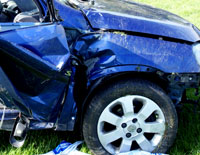 Buying car insurance in Massachusetts can seem complicated, with various types of coverages and state laws which have changed in recent years. The state requires all drivers to carry some level of insurance, but in 2008, drivers gained new buying options as Massachusetts moved away from a highly regulated industry to managed competition. At the same time, insurers have started changing their policies, so not all companies use the standard Massachusetts policy.
Buying car insurance in Massachusetts can seem complicated, with various types of coverages and state laws which have changed in recent years. The state requires all drivers to carry some level of insurance, but in 2008, drivers gained new buying options as Massachusetts moved away from a highly regulated industry to managed competition. At the same time, insurers have started changing their policies, so not all companies use the standard Massachusetts policy.
In the past, the state had set rates. But under “managed competition,” each insurance company can set its own price and compete for consumers’ business.
If you are a Massachusetts driver, you should shop around to obtain the best rates while still buying adequate insurance to protect yourself in a car accident. Here, the Boston car accident lawyers at Breakstone, White & Gluck offer some tips on what to consider before purchasing auto insurance for you and your family:
Compulsory Coverage
Massachusetts requires drivers to buy basic car insurance coverage, including:
- Bodily Injury to Others: $20,000 per person, $40,000 per accident
- Personal Injury Protection: $8,000 for medical bills and lost wages
- Bodily Injury from an Uninsured Driver: $20,000 per person and $40,000 per accident
- Damage to Another Person’s Property: $5,000
Optional Coverage
The compulsory coverage provides insufficient protection for car accidents. These other insurances offer additional protection.
- Bodily Injury: You can buy up to $500,000 per person per accident. If you cause a serious motor vehicle accident, this protects you from claims against your personal property.
- Underinsured Auto: You could be injured by another driver who does not have car insurance. You can protect yourself by purchasing up to $500,000 in coverage per person per car accident.
- Medical Payments: This coverage pays for medical expenses that exceed your $8,000 PIP coverage. You can obtain an extra $10,000 in coverage for a small cost.
- Collision Comprehensive. This coverage pays for damages to your vehicle in a car accident. This coverage is paid by the policy of the driver found to be at fault. Many people choose a high deductible to save money on their policy price, but this can cost you far more if you caused a car accident and have to pay a deductible for your own vehicle.
Click here for information on auto discounts and how to get additional insurance coverage through your homeowners’ insurance policy.
Related Blogs, Articles and Websites
Multaq Heart Drug Warning from FDA
 After years of close monitoring and label changes for Multaq, the Food and Drug Administration (FDA) has issued a new warning that the heart drug places some patients at an increased risk for serious cardiac events including death.
After years of close monitoring and label changes for Multaq, the Food and Drug Administration (FDA) has issued a new warning that the heart drug places some patients at an increased risk for serious cardiac events including death.
Multaq is used to treat various conditions, including patients with permanent Atrial Fibrillation (permanent AF). This is the most serious form of AF, which is an abnormal heart rhythm. The two other types are paroxysmal AF and persistent AF.
Permanent AF is a chronic condition in which sinus rhythm cannot be sustained despite treatment.
The FDA issued its Dec. 19, 2011 safety notification based on its monitoring of a 10-year study. In the communication, the FDA stated Multaq doubles the rate of cardiovascular death, stroke and heart failure in patients with permanent AF. The FDA advised healthcare professionals to:
- Not prescribe Mutlaq to patients with AF who cannot or will not be converted into normal sinus rhythm (permanent AF).
- Monitor heart rhythm by electrocardiogram at least once every three months.
- If the patient is in permanent AF, Multaq should be stopped or the patient should be cardioverted.
- Multaq is indicated to reduce hospitalization for AF in patients in sinus rhythm with a history of non-permanent AF.
- Patients prescribed Multaq should receive antithrombatic therapy.
The study the FDA acted on was called called the Permanent Atrial Fibrillation Outcome Study Using Dronedarone on Top of Standard Therapy (PALLAS). The study was stopped early in July 2011. The FDA said it will release more information as it becomes available.
Multaq Background
Dronedarone is the generic name for Multaq. It was approved by the FDA in 2009 to treat several conditions, including permanent AF. Manufactured by Sanof-Aventis, the drug has been prescribed to 500,000 people around the world.
Since 2009, Multaq has been subject to several FDA actions, including in 2010 a revised warning noting cases of worsening heart failure in some patients. In February 2011, the FDA changed the warning label to state that Multaq should be discontinued if liver damage is suspected.
Related Blogs and Websites
- Actos: FDA Warning About Bladder Cancer
- DePuy Hip Recall: Insurers Seek to Collect Settlements
- Transvaginal Mesh: What to Know If You’ve Been Injured
Car Accidents in Massachusetts Would Be Reduced Under Cell Phone Ban
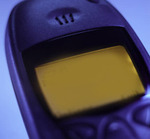 A ban on using hand-held cell phones behind the wheel was approved by the Massachusetts Legislature’s Joint Transportation Committee this week.
A ban on using hand-held cell phones behind the wheel was approved by the Massachusetts Legislature’s Joint Transportation Committee this week.
On Thursday, the committee voted 8-0 to move forward the bill which advocates say will reduce car accidents, driving injuries and motor vehicle deaths. Some lawmakers did not vote on the ban, which was also discussed in 2010. That year, a new law took effect to reduce motor vehicle accidents by banning drivers under 18 from using cell phones to talk or text. All other drivers were banned from texting while driving.
Under the proposed cell phone ban, drivers would still be allowed to use hands-free cell phones with Bluetooth and other devices. Many safety advocates say hands-free cell phones are safer and this type of ban will help police better enforce the law. Right now, police say it is difficult to differentiate between drivers dialing a phone number and sending a text message.
As a result, police only wrote 1,100 tickets for texting while driving in the law’s first year, according to the Department of Transportation. This averages one for every 200 speeding tickets issued among Massachusetts’ 4.7 million drivers in the same period.
The hand-held cell phone ban will now be sent to the Massachusetts House of Representatives and Senate. The Ways and Means Committee may also consider the financial aspects of it.
If approved, Massachusetts will become the 10th state to ban any type of cell phone use while driving.
The national debate over cell phone use and car accidents has been growing stronger.
In December, the National Transportation Safety Board (NTSB) called for a nationwide ban on driver use of portable electronic devices (PEDs) while operating a motor vehicle. U.S. Secretary of Transportation Ray LaHood said he opposed including hands-free cell phones.
Click here to read more about the proposed hand-held cell phone ban in The Boston Globe.
Read More
Actos Warning From FDA
Hundreds of thousands of diabetes patients have been re-considering their medication plans after a recent warning from the Food and Drug Administration (FDA).
On June 15, 2011, the FDA issued a safety communication reporting that use of the oral diabetes medication Actos (pioglitazone) for more than one year may be associated with an increased risk of bladder cancer.
The FDA warned that patients with active bladder cancer should not be taking pioglitazone and those with a prior history should only use it after considering the potential medical benefits against the risk for cancer recurrence.
Actos is an oral drug used to treat type II diabetes, the most common form of the illness that plagues 25.8 million Americans. Actos is manufactured by Takeda Pharmaceutical Company and co-marketed by Eli Lilly and Company. It is one of the most widely used medications on the market. Over 2 million patients filled prescriptions for it in 2010.
The communication came as the FDA placed restrictions on Avandia, another popular medication, after studies showed it increased the risk of heart attacks. Both drugs belong to the thiazolidinedione class of drugs.
The warning about Actos came as the FDA made a periodic review of an ongoing 10-year Actos study into the risk for developing bladder cancer. The study reports there may be a 40 percent greater risk for developing bladder cancer among those who take Actos for more than a year.
The FDA’s warning came a new epidemiological study out of France suggested an increased risk of bladder cancer with pioglitazone use. As a result, France has suspended use of Actos and Germany has recommended new patients not be placed on the drug.
On August 4, 2011, the FDA reported it had approved new label and medication instructions for Actos. The FDA is continuing to monitor the results of Actos cancer studies.
Patients taking Actos should contact their doctors if they experience any sign of blood in the urine or a red color in the urine or other urinary pain, as these Actos complications may be signs of bladder cancer.
Click here to read the June 15, 2011 FDA Safety Communication on Actos.
Read More
Massachusetts Considers Ban on Cell Phone Use While Driving
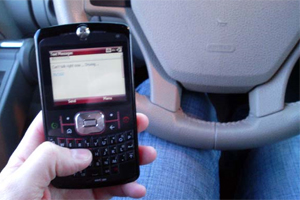 Massachusetts lawmakers will consider tougher laws this week to reduce car accidents associated with cell phone use.
Massachusetts lawmakers will consider tougher laws this week to reduce car accidents associated with cell phone use.
The Legislature’s Joint Commission on Transportation will hold a hearing Tuesday to discuss several bills. One proposed measure would only allow drivers to use hands-free cell phones. Another would ban drivers from using any type of cell phone within school zones.
Just nine states and the District of Columbia prohibit all cell phone use while driving. Massachusetts joins 34 other states and the District of Columbia in banning texting while driving for all drivers.
In December, the National Transportation Safety Board (NTSB) recommended a nationwide ban on driver use of portable electronic devices (PEDs) while operating a motor vehicle. The recommendation would ban use of all non-emergency portable electronic devices and the board wants to follow the NHTSA’s model of high-visibility enforcement and focused safety communication campaigns. U.S. Secretary of Transportation Ray LaHood is opposed to including hands-free cell phones in the ban.
Texting while driving, cell phone use and other distracted driving behavior causes a large number of car accidents across the country each year. In 2009, 16 percent of fatal motor vehicle accidents involved texting while driving and other distracted behavior. Twenty percent of car accidents resulting in injury involved distracted driving.
Massachusetts’ ban on texting while driving took effect Sept. 30, 2010. But Massachusetts, like other states, has found its ban hard to enforce. The law bans texting while driving in a moving car, as well as when behind the wheel at intersections. But critics say it is often difficult to tell whether a driver is texting or dialing a number.
Another challenge is Americans are sending more text messages than in the past. In June 2011, more than 196 billion text messages were sent in this country, a 50 percent increase from June 2009, according to CTIA, the international association for the wireless telecommunications industry.
There is research which shows any type of cell phone use engages a driver enough to create a dangerous distraction. A Carnegie Mellon University study found using a cell phone behind the wheel reduces the amount of brain activity associated with driving by 37 percent. And a study from the Virginia Tech Transportation Institute (VTTI) found that headset cell phone use is not substantially safer than hand-held use.
But when drivers text behind the wheel, they are 23 times more likely to get into a car crash than normal, the VTTI study found. Sending or receiving a text takes a driver’s eyes off from the road for an average of 4.6 seconds, which is the full-length of a football field for a car traveling at 55 mph.
Read more about Massachusetts’ proposed bans on cell phone use. Read more about the NTSB’s recommendation to ban driver use of ban portable electronic devices.
Read More


